Unambiguous pictorial narratives of a worshipper, Pleiades, ficus benghalensis canopy or arbour and related hieroglyph-multiplexes of Indus Script Corpora are deciphered as manifold array of metal instruments from iron smelting work.
Indus script hieroglyph-multiplexes associated with 'Pleiades' hieroglyphs and a markhor with a human face, a worshipper in front of an arbour, canopy of ficus benghalensis point to iron smelting work. The specific words in Meluhha (Proto-Prakritam) lexis are the cipher which lead to this decipherment: manifold array of metal instruments and metal castings.
Hieroglyph: bahulā f. pl. ʻ the Pleiades ʼ Rebus: bāhula बाहुल a. Manifold.
[Pleiades, (twigs as headdress) scarfed, framework, scarfed person, worshipper, markhor, ficus religiosa] Brief memoranda:
Hieroglyph: మండ [ maṇḍa ] manḍa. [Tel.] n. A twig with leaves on it. Rebus: mã̄ḍ m. ʻ array of instruments &c. (CDIAL 9736) maṇḍa 'iron dross, slag' Sa. <i>mE~R~hE~'d</i> `iron'. ! <i>mE~RhE~d</i>(M). Ma. <i>mErhE'd</i> `iron'.Mu. <i>mERE'd</i> `iron'. ~ <i>mE~R~E~'d</i> `iron'. ! <i>mENhEd</i>(M).Ho <i>meD</i> `iron'.Bj. <i>merhd</i>(Hunter) `iron'.KW <i>mENhEd</i> (Munda)
bahulā f. pl. ʻ the Pleiades ʼ VarBr̥S., °likā -- f. pl. lex. [bahulá -- ]Kal. bahul ʻ the Pleiades ʼ, Kho. ból, (Lor.) boul, bolh, Sh. (Lor.) b*lle.(CDIAL 9195) பாகுலம் pākulam , n. < bāhula. The month of Kārttikai = November-December; கார்த்திகை மாதம். (W.) పావడము [ pāvaḍamu ] pāvaḍamu. [Tel.] n. A present, gift. కానుక. बाहुल्य [ bāhulya ] n (S) Abundance, copiousness, plenty.
Rebus: Manifold: bāhula बाहुल a. Manifold. -लः Fire; शीतरुजं समये च परस्मिन् बाहुलतो रसिका शमयन्ती Rām. Ch.4.99. -2 The month Kārtika. -लम् 1 Manifoldness. -2 An armour for the arms, vantbrass. -ली The day of full moon in the month of Kārtika.
Rebus: பாகுடம் pākuṭam, n. < Pkt. pāuḍa < prābhṛta. [K. pāvuḍa.] 1. Gift, present; கையுறை. நரிப் படைக்கொரு பாகுடம்போலே (திவ். பெரியாழ். 4, 5, 8). 2. Royal revenue, impost, tribute; அரசிறை. (சூடா.)
Hieroglyph: bagala 'Pleiades' Rebus: బంగల [ baṅgala ] bangala. [Tel.] n. An oven. కుంపటి.(Telugu) பங்காரு paṅkāru , n. < T. baṅgāru. [K. baṅgāra.] Gold; பொன். Loc.
Pa. Pk. bahala-- ʻ dense, thick ʼ(CDIAL 9182)
bhaṭā 'brick kiln' (Assamese) بټ baṯṯ, s.m. (2nd) A large iron pan or cauldron for roasting grain, a furnace, a kiln.(Pashto)
bhuvɔ m. ʻ worshipper in a temple ʼ (Gujarati) rather < bhr̥ta --(CDIAL 9554) Yājñ.com., Rebus: bhaṭā‘kiln, furnace’ Pk. bhuaga -- m. ʻ worshipper in a temple ʼPk. bhayaga -- m. ʻ servant ʼ, bhaḍa -- m. ʻ soldier ʼ(CDIAL 9558)
*bhr̥tagātu ʻ hero song ʼ. [bhr̥ta -- , gātú -- 2] Ku. bhaṛau ʻ song about the prowess of ancient heroes ʼ.(CDIAL 9590)
m0448 (Framework, tiger, scarfed person, worshipper, twig, horn, markhor, stool, ladle)
![]()
![]()
![]() kole.l'temple' Rebu: kole.l'smithy' (Kota) baTa 'rimless pot' Rebus: bhaTa 'furnace, kiln'.
kole.l'temple' Rebu: kole.l'smithy' (Kota) baTa 'rimless pot' Rebus: bhaTa 'furnace, kiln'.
dhatu + bhaTa 'scarf + worshipper, bard' Rebus: dhatu bhaTa 'iron ore smelter'
Offering hieroglyph-multiplex: worshipper, scarfed + human face+ markhor: cast iron ingots
Hieroglyph: miṇḍāl markhor (Tor.wali) meḍho a ram, a sheep (G.) Rebus: meḍ (Ho.); mẽṛhet‘iron’ (Munda.Ho.)
Hieroglyph: mũhe ‘face’ (Santali) Rebus: mũh opening or hole (in a stove for stoking (Bi.); ingot (Santali) mũh metal ingot (Santali) mũhã̄ = the quantity of iron produced at one time in a native smelting furnace of the Kolhes; iron produced by the Kolhes and formed like a four-cornered piece a little pointed at each end; mūhā mẽṛhẽt = iron smelted by the Kolhes and formed into an equilateral lump a little pointed at each of four ends; kolhe tehen mẽṛhẽt ko mūhā akata = the Kolhes have to-day produced pig iron (Santali)
m1186 (DK6847) [Pleiades, scarfed, framework, ficus religiosa , scarfed person, worshipper, twigs (on head), horn, markhor, human face ligatured to markhor, stool, ladle, frame of a building] Brief memoranda:
![]() Ficus benghalensis
Ficus benghalensis
Hieroglyph: karã̄ n. pl. wristlets, bangles: kará1 ʻ doing, causing ʼ AV., m. ʻ hand ʼ RV. [√kr̥1]Pa. Pk. kara -- m. ʻ hand ʼ; S. karu m. ʻ arm ʼ; Mth. kar m. ʻ hand ʼ (prob. ← Sk.); Si. kara ʻ hand, shoulder ʼ, inscr. karā ʻ to ʼ < karāya. -- Deriv. S. karāī f. ʻ wrist ʼ; G. karã̄ n. pl. ʻ wristlets, bangles ʼ.(CDIAL 2779)
Hieroglyph: dhatu 'scarf' Rebus: dhatu'mineral ore' Thus, dhatu + karã̄ Rebus: dhatu khār' iron ore (mineral) worker'.
Hieroglyph: scarf: *dhaṭa2, dhaṭī -- f. ʻ old cloth, loincloth ʼ lex. [Drav., Kan. daṭṭi ʻ waistband ʼ etc., DED 2465]Ku. dhaṛo ʻ piece of cloth ʼ, N. dharo, B. dhaṛā; Or. dhaṛā ʻ rag, loincloth ʼ, dhaṛi ʻ rag ʼ; Mth. dhariā ʻ child's narrow loincloth ʼ.*dhaṭavastra -- .Addenda: *dhaṭa -- 2. 2. †*dhaṭṭa -- : WPah.kṭg. dhàṭṭu m. ʻ woman's headgear, kerchief ʼ, kc. dhaṭu m. (also dhaṭhu m. ʻ scarf ʼ, J. dhāṭ(h)u m. Him.I 105).(CDIAL 6707)
Rebus: dhā̆vaḍ iron smelter: dhāˊtu n. ʻ substance ʼ RV., m. ʻ element ʼ MBh., ʻ metal, mineral, ore (esp. of a red colour) ʼ Mn., ʻ ashes of the dead ʼ lex., ʻ *strand of rope ʼ (cf. tridhāˊtu -- ʻ threefold ʼ RV.,ayugdhātu -- ʻ having an uneven number of strands ʼ KātyŚr.). [√dhā]
Pa. dhātu -- m. ʻ element, ashes of the dead, relic ʼ; KharI. dhatu ʻ relic ʼ; Pk. dhāu -- m. ʻ metal, red chalk ʼ; N. dhāu ʻ ore (esp. of copper) ʼ; Or. ḍhāu ʻ red chalk, red ochre ʼ (whence ḍhāuā ʻ reddish ʼ; M. dhāū, dhāv m.f. ʻ a partic. soft red stone ʼ (whence dhā̆vaḍ m. ʻ a caste of iron -- smelters ʼ, dhāvḍī ʻ composed of or relating to iron ʼ); -- Si. dā ʻ relic ʼ; -- S. dhāī f. ʻ wisp of fibres added from time to time to a rope that is being twisted ʼ, L. dhāī˜ f.(CDIAL 6773)
khār 1 खार् । लोहकारः m. (sg. abl. khāra 1 खार; the pl. dat. of this word is khāran 1 खारन्, which is to be distinguished from khāran 2, q.v., s.v.), a blacksmith, an iron worker (cf. bandūka-khār, p. 111b, l. 46; K.Pr. 46; H. xi, 17); a farrier (El.). This word is often a part of a name, and in such case comes at the end (W. 118) as in Wahab khār, Wahab the smith (H. ii, 12; vi, 17).
khāra-basta खार-बस््त । चर्मप्रसेविका f. the skin bellows of a blacksmith. -büṭhü -ब&above;ठू&below; । लोहकारभित्तिः f. the wall of a blacksmith's furnace or hearth. -bāy -बाय् । लोहकारपत्नी f. a blacksmith's wife (Gr.Gr. 34). -dŏkuru -। लोहकारायोघनः m. a blacksmith's hammer, a sledge-hammer. -gȧji -ग&above;जि&below; or -güjü - । लोहकारचुल्लिः f. a blacksmith's furnace or hearth. -hāl -हाल् । लोहकारकन्दुः f. (sg. dat. -höjü -), a blacksmith's smelting furnace; cf. hāl 5. -kūrü - । लोहकारकन्या f. a blacksmith's daughter. -koṭu । लोहकारपुत्रः m. the son of a blacksmith, esp. a skilful son, who can work at the same profession. -küṭü -। लोहकारकन्या f. a blacksmith's daughter, esp. one who has the virtues and qualities properly belonging to her father's profession or caste. -më˘ʦü 1 -म्य&above;च&dotbelow;ू&below; । लोहकारमृत्तिका f. (for 2, see [khāra 3] ), 'blacksmith's earth,' i.e. iron-ore. -nĕcyuwu -न्यचिवु&below; । लोहकारात्मजः m. a blacksmith's son. -nay -नय् । लोहकारनालिका f. (for khāranay 2, see [khārun] ), the trough into which the blacksmith allows melted iron to flow after smelting. -ʦañĕ -च्&dotbelow;ञ । लोहकारशान्ताङ्गाराः f.pl. charcoal used by blacksmiths in their furnaces. -wān वान् । लोहकारापणः m. a blacksmith's shop, a forge, smithy (K.Pr. 3). -waṭh -वठ् । आघाताधारशिला m. (sg. dat. -waṭas -वटि), the large stone used by a blacksmith as an anvil.(Kashmiri)
Hieroglyph: vaṭa1 m. ʻ the banyan Ficus indica ʼ MBh.Pa. vaṭa -- m. ʻ banyan ʼ, Pk. vaḍa -- , °aga -- m., K. war in war -- kulu m., S. baṛu m. (← E); P. vaṛ, baṛ m., vohṛ, bohṛ f. ʻ banyan ʼ, vaṛoṭā, ba° m. ʻ young banyan ʼ (+?); N. A. bar ʻ banyan ʼ, B. baṛ, Bi. bar (→ Or. bara), H. baṛ m. (→ Bhoj. Mth. baṛ), G. vaṛ m., M. vaḍ m., Ko. vaḍu.*vaṭapadra -- , *vaṭapātikā -- .Addenda: vaṭa -- 1: Garh. baṛ ʻ fig tree ʼ.(CDIAL 11211) *vaṭapadra ʻ a place -- name ʼ. [vaṭa -- 1, padrá -- ?] Pk. vaḍavadda -- n. ʻ name of a town in Gujarat ʼ, G. vaṛod ʻ Baroda ʼ ODBL 497. (CDIAL 11214) *vaṭapātikā ʻ falling from banyan ʼ. [vaṭa -- 1, pāta -- ]G. vaṛvāī f. ʻ hanging root of banyan tree ʼ.(CDIAL 11215) Rebus: bhaṭṭhā 'kiln' bhaṭhī 'furnace'.
bhráṣṭra n. ʻ frying pan, gridiron ʼ MaitrS. [√bhrajj]Pk. bhaṭṭha -- m.n. ʻ gridiron ʼ; K. büṭhü f. ʻ level surface by kitchen fireplace on which vessels are put when taken off fire ʼ; S. baṭhu m. ʻ large pot in which grain is parched, large cooking fire ʼ, baṭhī f. ʻ distilling furnace ʼ; L. bhaṭṭh m. ʻ grain -- parcher's oven ʼ, bhaṭṭhī f. ʻ kiln, distillery ʼ, awāṇ. bhaṭh; P. bhaṭṭh m., °ṭhī f. ʻ furnace ʼ, bhaṭṭhā m. ʻ kiln ʼ; N. bhāṭi ʻ oven or vessel in which clothes are steamed for washing ʼ; A. bhaṭā ʻ brick -- or lime -- kiln ʼ; B. bhāṭi ʻ kiln ʼ; Or. bhāṭi ʻ brick -- kiln, distilling pot ʼ; Mth. bhaṭhī, bhaṭṭī ʻ brick -- kiln, furnace, still ʼ; Aw.lakh.bhāṭhā ʻ kiln ʼ; H. bhaṭṭhā m. ʻ kiln ʼ, bhaṭ f. ʻ kiln, oven, fireplace ʼ; M. bhaṭṭā m. ʻ pot of fire ʼ, bhaṭṭī f. ʻ forge ʼ. -- X bhástrā -- q.v.
bhrāṣṭra -- ; *bhraṣṭrapūra -- , *bhraṣṭrāgāra -- .Addenda: bhráṣṭra -- : S.kcch. bhaṭṭhī keṇī ʻ distil (spirits) ʼ.*bhraṣṭrapūra ʻ gridiron -- cake ʼ. [Cf. bhrāṣṭraja -- ʻ pro- duced on a gridiron ʼ lex. -- bhráṣṭra -- , pūra -- 2]P. bhaṭhūhar, °hrā, bhaṭhūrā, °ṭhorū m. ʻ cake of leavened bread ʼ; -- or < *bhr̥ṣṭapūra -- .*bhraṣṭrāgāra ʻ grain parching house ʼ. [bhráṣṭra -- , agāra -- ]
P. bhaṭhiār, °ālā m. ʻ grainparcher's shop ʼ.(CDIAL 9656-9658)
kuṭire bica duljad.ko talkena, they were feeding the furnace with ore. In this Santali sentence bica denotes the hematite ore. For example, samṛobica, 'stones containing gold' (Mundari) meṛed-bica 'iron stone-ore' ; bali-bica, iron sand ore (Munda). mẽṛhẽt, meḍ ‘iron’(Munda. Ho.)
Meluhha rebus representations are: bica ‘scorpion’ bica ‘stone ore’.
![]() Santali glosses
Santali glosses
Hieroglyph: 'human face': mũhe ‘face’ (Santali)
Rebus: mũh opening or hole (in a stove for stoking (Bi.); ingot (Santali) mũh metal ingot (Santali) mũhã̄ = the quantity of iron produced at one time in a native smelting furnace of the Kolhes; iron produced by the Kolhes and formed like a four-cornered piece a little pointed at each end; mūhā mẽṛhẽt = iron smelted by the Kolhes and formed into an equilateral lump a little pointed at each of four ends; kolhe tehen mẽṛhẽt ko mūhā akata = the Kolhes have to-day produced pig iron (Santali)
m1175 Composite animal with a two-glyph inscription (water-carrier, rebus: kuti 'furnace'; road, bata; rebus: bata 'furnace'). m1186A Composite animal hieroglyph. Text of inscription (3 lines).
There are many examples of the depiction of 'human face' ligatured to animals:![]()
![]()
![]()
![]()
![]()
![]()
The animal is a quadruped: pasaramu, pasalamu = an animal, a beast, a brute, quadruped (Te.)Rebus: pasra ‘smithy’ (Santali) Allograph: panǰā́r ‘ladder, stairs’(Bshk.)(CDIAL 7760) Thus the composite animal connotes a smithy. Details of the smithy are described orthographically by the glyphic elements of the composition.
Rebus reading of the 'face' glyph: mũhe ‘face’ (Santali) mũh opening or hole (in a stove for stoking (Bi.); ingot (Santali)mũh metal ingot (Santali) mũhã̄ = the quantity of iron produced at one time in a native smelting furnace of the Kolhes; iron produced by the Kolhes and formed like a four-cornered piece a little pointed at each end; mūhā mẽṛhẽt = iron smelted by the Kolhes and formed into an equilateral lump a little pointed at each of four ends; kolhe tehen mẽṛhẽt ko mūhā akata = the Kolhes have to-day produced pig iron (Santali.lex.) kaula mengro ‘blacksmith’ (Gypsy) mleccha-mukha (Skt.) = milakkhu ‘copper’ (Pali) The Sanskrit loss mleccha-mukha should literally mean: copper-ingot absorbing the Santali gloss, mũh, as a suffix.
A remarkable phrase in Sanskrit indicates the link between mleccha and use of camels as trade caravans. This is explained in the lexicon of Apte for the lexeme: auṣṭrika 'belonging to a camel'. The lexicon entry cited Mahābhārata: औष्ट्रिक a. Coming from a camel (as milk); Mb.8. 44.28; -कः An oil-miller; मानुषाणां मलं म्लेच्छा म्लेच्छाना- मौष्ट्रिका मलम् । औष्ट्रिकाणां मलं षण्ढाः षण्ढानां राजयाजकाः ॥ Mb.8.45.25. From the perspective of a person devoted to śāstra and rigid disciplined life, Baudhāyana thus defines the word म्लेच्छः mlēcchḥ : -- गोमांसखादको यस्तु विरुद्धं बहु भाषते । सर्वाचारविहीनश्च म्लेच्छ इत्यभिधीयते ॥ 'A person who eatrs meat, deviates from traditional practices.'
The 'face' glyph is thus read rebus: mleccha mũh 'copper ingot'.
It is significant that Vatsyayana refers to crptography in his lists of 64 arts and calls it mlecchita-vikalpa, lit. 'an alternative representation -- in cryptography or cipher -- of mleccha words.'
The glyphic of the hieroglyph: tail (serpent), face (human), horns (bos indicus, zebu or ram), trunk (elephant), front paw (tiger),
kulā 'hood of snake' as tail![]() This hieroglyph appears on Jasper Akkadian cylinder seal. kulā hood of snake Rebus: kolle'blacksmith'
This hieroglyph appears on Jasper Akkadian cylinder seal. kulā hood of snake Rebus: kolle'blacksmith'
One Proto-Prakritam word signifies both 'tail' and 'hood of serpent'. The word is: xolā 'tail' of antelope andkulā hooded snake as tail. A similar sounding word signifies a blacksmith or smelter: kolle 'blacksmith' kolhe 'smelter'. These can be cited as 'signature' tunes of the writing system, to convey the semantics of a metalworker -- a smith or a smelter.
See:
http://bharatkalyan97.blogspot.in/2015/09/indus-script-corpora-signify-kolhe.html
xolā = tail (Kur.); qoli id. (Malt.)(DEDr 2135). Rebus: kol ‘pañcalōha’ (Ta.)கொல் kol, n. 1. Iron; இரும்பு. மின் வெள்ளி பொன் கொல்லெனச் சொல்லும் (தக்கயாகப். 550). 2. Metal; உலோகம். (நாமதீப. 318.) கொல்லன் kollaṉ, n. < T. golla. Custodian of treasure; கஜானாக்காரன். (P. T. L.) கொல்லிச்சி kollicci, n. Fem. of கொல்லன். Woman of the blacksmith caste; கொல்லச் சாதிப் பெண். (யாழ். அக.) The gloss kollicci is notable. It clearly evidences that kol was a blacksmith. kola ‘blacksmith’ (Ka.); Koḍ. kollë blacksmith (DEDR 2133). Ta. kol working in iron, blacksmith; kollaṉ blacksmith. Ma. kollan blacksmith, artificer. Ko. kole·l smithy, temple in Kota village. To. kwala·l Kota smithy. Ka. kolime, kolume, kulame, kulime, kulume, kulme fire-pit, furnace; (Bell.; U.P.U.) konimi blacksmith; (Gowda) kolla id. Koḍ. kollë blacksmith. Te. kolimi furnace. Go. (SR.) kollusānā to mend implements; (Ph.) kolstānā, kulsānā to forge; (Tr.) kōlstānā to repair (of ploughshares); (SR.) kolmi smithy (Voc. 948). Kuwi (F.) kolhali to forge (DEDR 2133) கொல்² kol Working in iron; கொற்றொழில். Blacksmith; கொல்லன். (Tamil) mũhe ‘face’ (Santali); Rebus: mũh '(copper) ingot' (Santali);mleccha-mukha (Skt.) = milakkhu ‘copper’ (Pali) கோடு kōṭu : •நடுநிலை நீங்குகை. கோடிறீக் கூற் றம் (நாலடி, 5). 3. [K. kōḍu.] Tusk; யானை பன்றிகளின் தந்தம். மத்த யானையின் கோடும் (தேவா. 39, 1). 4. Horn; விலங்கின் கொம்பு. கோட்டிடை யாடினை கூத்து (திவ். இயற். திருவிருத். 21). Ko. kṛ (obl. kṭ-) horns (one horn is kob), half of hair on each side of parting, side in game, log, section of bamboo used as fuel, line marked out. To. kwṛ (obl. kwṭ-) horn, branch, path across stream in thicket. Ka. kōḍu horn, tusk, branch of a tree; kōr̤ horn. Tu. kōḍů, kōḍu horn. Te. kōḍu rivulet, branch of a river. Pa. kōḍ (pl. kōḍul) horn (DEDR 2200)Rebus: koḍ = the place where artisans work (G.) kul 'tiger' (Santali); kōlu id. (Te.) kōlupuli = Bengal tiger (Te.)Pk. kolhuya -- , kulha -- m. ʻ jackal ʼ < *kōḍhu -- ; H.kolhā, °lā m. ʻ jackal ʼ, adj. ʻ crafty ʼ; G. kohlũ, °lũ n. ʻ jackal ʼ, M. kolhā, °lā m. krōṣṭŕ̊ ʻ crying ʼ BhP., m. ʻ jackal ʼ RV. = krṓṣṭu -- m. Pāṇ. [√kruś] Pa. koṭṭhu -- , °uka -- and kotthu -- , °uka -- m. ʻ jackal ʼ, Pk. koṭṭhu -- m.; Si. koṭa ʻ jackal ʼ, koṭiya ʻ leopard ʼ GS 42 (CDIAL 3615). कोल्हा [ kōlhā ] कोल्हें [ kōlhēṃ ] A jackal (Marathi) Rebus: kol ‘furnace, forge’ (Kuwi) kol ‘alloy of five metals, pañcaloha’ (Ta.) Allograph: kōla = woman (Nahali) [The ligature of a woman to a tiger is a phonetic determinant; the scribe clearly conveys that the gloss represented is kōla] karba 'iron' (Ka.)(DEDR 1278) as in ajirda karba 'iron' (Ka.) kari, karu 'black' (Ma.)(DEDR 1278) karbura 'gold' (Ka.) karbon 'black gold, iron' (Ka.) kabbiṇa 'iron' (Ka.) karum pon 'iron' (Ta.); kabin 'iron' (Ko.)(DEDR 1278) Ib 'iron' (Santali) [cf. Toda gloss below: ib ‘needle’.] Ta. Irumpu iron, instrument, weapon. a. irumpu,irimpu iron. Ko. ibid. To. Ib needle. Koḍ. Irïmbï iron. Te. Inumu id. Kol. (Kin.) inum (pl. inmul)iron, sword. Kui (Friend-Pereira) rumba vaḍi ironstone (for vaḍi, see 5285). (DEDR 486) Allograph: karibha -- m. ʻ Ficus religiosa (?) [Semantics of ficus religiosa may be relatable to homonyms used to denote both the sacred tree and rebus gloss: loa, ficus (Santali); loh ‘metal’ (Skt.)]
miṇḍāl markhor (Tor.wali) meḍho a ram, a sheep (G.)(CDIAL 10120)bhēḍra -- , bhēṇḍa -- m. ʻ ram ʼ lex. [← Austro -- as. J. Przyluski BSL xxx 200: perh. Austro -- as. *mēḍra ~ bhēḍra collides with Aryan mḗḍhra -- 1 in mēṇḍhra -- m. ʻ penis ʼ BhP., ʻ ram ʼ lex. -- See also bhēḍa -- 1, mēṣá -- , ēḍa -- . -- The similarity between bhēḍa -- 1, bhēḍra -- , bhēṇḍa -- ʻ ram ʼ and *bhēḍa -- 2 ʻ defective ʼ is paralleled by that between mḗḍhra -- 1, mēṇḍha -- 1 ʻ ram ʼ and *mēṇḍa -- 1, *mēṇḍha -- 2 (s.v. *miḍḍa -- ) ʻ defective ʼ](CDIAL 9606) mēṣá m. ʻ ram ʼ, °ṣīˊ -- f. ʻ ewe ʼ RV. 2. mēha -- 2, miha- m. lex. [mēha -- 2 infl. by mḗhati ʻ emits semen ʼ as poss. mēḍhra -- 2 ʻ ram ʼ (~ mēṇḍha -- 2) by mḗḍhra -- 1 ʻ penis ʼ?]1. Pk. mēsa -- m. ʻ sheep ʼ, Ash. mišalá; Kt. məṣe/l ʻ ram ʼ; Pr. məṣé ʻ ram, oorial ʼ; Kal. meṣ, meṣalák ʻ ram ʼ, H. mes m.; -- X bhēḍra -- q.v.2. K. myã̄ -- pūtu m. ʻ the young of sheep or goats ʼ; WPah.bhal. mei f. ʻ wild goat ʼ; H. meh m. ʻ ram ʼ.mēṣāsya -- ʻ sheep -- faced ʼ Suśr. [mēṣá -- , āsyà -- ](CDIAL 10334) Rebus: meḍ (Ho.); mẽṛhet ‘iron’ (Mu.Ho.)mẽṛh t iron; ispat m. = steel; dul m. = cast iron (Mu.) Allograph: meḍ ‘body ' (Mu.)
bhaṭā G. bhuvɔ m. ʻ worshipper in a temple ʼ rather < bhr̥ta --(CDIAL
9554) Yājñ.com., Rebus: bhaṭā‘kiln, furnace’
mū̃h ‘human face’ Rebus: mū̃h‘ingot’ (See human face ligatured to a markhor: Seal m1186) PLUS Dm. mraṅ m. ‘markhor’ Wkh. merg f. ‘ibex’ (CDIAL 9885) Tor. miṇḍ‘ram’,miṇḍā́l‘markhor’ (CDIAL 10310) Rebus: meḍ (Ho.); mẽṛhet‘iron’ (Munda.Ho.)
lo, no‘nine’ phonetic reinforcement of: loa‘ficus’ Rebus: lo‘copper’
dhaṭu m. (also dhaṭhu) m. ‘scarf’ (Western Pahari) (CDIAL 6707) Rebus: dhatu‘minerals’ (Santali)
maṇḍa m. ʻ ornament ʼ Rebus: meḍ (Ho.); mẽṛhet‘iron’ (Munda.Ho.)
baṭa = rimless pot (Kannada) Rebus: baṭa = a kind of iron (Gujarati)
dhatu 'scarf' Rebus: dhatu 'mineral ore'
muka ‘ladle’ (Tamil)(DEDR 4887) Rebus: mū̃h ‘ingot’ (Santali) PLUS dula'pair'
Rebus: dul'cast metal'. (See two ladles). Thus, the offering on the stool denotes: a metal ingot.
bagala ‘pleiades’ Rebus: bagalo = an Arabian merchant vessel (G.) bagala = an Arab boat of a particular description (Ka.); bagalā (M.); bagarige, bagarage = a kind of vessel (Ka.)
Detail of the seal.(Framework, ficus religiosa, scarfed person, twig, horn) http://huntingtonarchive.osu.edu/resources/downloads/webPresentations/harappanSeals.pdf
![]() m1186 seal. kaula— m. ‘worshipper of Śakti according to left—hand ritual’, khōla—3 ‘lame’; Khot. kūra— ‘crooked’ BSOS ix 72 and poss. Sk. kōra— m. ‘movable joint’ Suśr.] Ash. kṓlƏ ‘curved, crooked’; Dm. kōla ‘crooked’, Tir. kṓolƏ; Paš. kōlā́ ‘curved, crooked’, Shum. kolā́ṇṭa; Kho. koli ‘crooked’, (Lor.) also ‘lefthand, left’; Bshk. kōl ‘crooked’; Phal. kūulo; Sh. kōlu̯ ‘curved, crooked’ (CDIAL 3533).
m1186 seal. kaula— m. ‘worshipper of Śakti according to left—hand ritual’, khōla—3 ‘lame’; Khot. kūra— ‘crooked’ BSOS ix 72 and poss. Sk. kōra— m. ‘movable joint’ Suśr.] Ash. kṓlƏ ‘curved, crooked’; Dm. kōla ‘crooked’, Tir. kṓolƏ; Paš. kōlā́ ‘curved, crooked’, Shum. kolā́ṇṭa; Kho. koli ‘crooked’, (Lor.) also ‘lefthand, left’; Bshk. kōl ‘crooked’; Phal. kūulo; Sh. kōlu̯ ‘curved, crooked’ (CDIAL 3533). Rebus: kol ‘pancaloha’ (Tamil)
The rice plant adorning the curved horn of the person (woman?) with the pig-tail is kolmo; read rebus, kolme ‘smithy’. Smithy of what? Kol ‘pancaloha’. The curving horn is: kod.u = horn; rebus: kod. artisan’s workshop (Kuwi)
The long curving horns may also connote a ram:
![clip_image061]()
h177B
![clip_image062[4]]()
4316 Pict-115: From R.—a person standing under an ornamental arch; a kneeling adorant; a ram with long curving horns.
The ram read rebus: me~d. ‘iron’; glyph: me_n.d.ha ram; min.d.a_l markhor (Tor.); meh ram (H.); mei wild goat (WPah.) me~r.hwa_ a bullock with curved horns like a ram’s (Bi.) me~r.a_, me~d.a_ ram with curling horns (H.)
![]() Ligatures: Worshipper + rimless pot + scarf (on pigtail)
Ligatures: Worshipper + rimless pot + scarf (on pigtail)
Signs 45, 46: A variant of ‘adorant’ hieroglyph sign is shown with a ‘rimless, broad-mouthed pot’ which is baṭa read rebus: bhaṭa ‘furnace’. If the ‘pot’ ligature is a phonetic determinant, the gloss for the ‘adorant’ is bhaṭa ‘worshipper’. If the ‘kneeling’ posture is the key hieroglyphic representation, the gloss is eragu ‘bow’ Rebus: erako ‘moltencast copper’. Thus moltencast copper furnace. + dhaṭu m. (also dhaṭhu) m. ‘scarf’ (Western Pahari) (CDIAL 6707) Rebus: dhatu ‘minerals’ (Santali). Thus Sign 46 read rebus: moltencast copper minerals furnace.
Arbour, canopy: మండ [ maṇḍa ] manḍa. [Tel.] n. A twig with leaves on it. చెట్టుకొమ్మ. A small branch, ఉపశాఖ.MAṆḌ ʻ adorn ʼ. [Scarcely < *mr̥ndati ʻ rubs ʼ; nor is P. Thieme's derivation (ZDMG 93, 133) as MIA. < *mr̥ṁṣṭē (√mr̥j) phonet. convincing. Prob. with J. Bloch BSOS v 741 ← Drav. (Tam.maṇṇu ʻ to decorate ʼ 9736 maṇḍa2 m. ʻ ornament ʼ lex. [√maṇḍ]Pk. maṁḍaya -- ʻ adorning ʼ; Ash. mōṇḍa, mōnda, mūnda NTS ii 266, mōṇə NTS vii 99 ʻ clothes ʼ; G. mã̄ḍ m. ʻ arrangement, disposition, vessels or pots for decoration ʼ, māṇ f. ʻ beautiful array of household vessels ʼ; Si. maḍa -- ya ʻ adornment, ornament ʼ.(CDIAL 9736) maṇḍa6 ʻ some sort of framework (?) ʼ. [In nau -- maṇḍḗ n. du. ʻ the two sets of poles rising from the thwarts or the two bamboo covers of a boat (?) ʼ ŚBr. (as illustrated in BPL p. 42); and in BHSk. and Pa. bōdhi -- maṇḍa -- n. perh. ʻ thatched cover ʼ rather than ʻ raised platform ʼ (BHS ii 402).(CDIAL 9737) N. maṛher, maṛer ʻ one who carries ornaments &c. in the marriage procession ʼ.(CDIAL 9738) maṇḍana n. ʻ adorning ʼ MBh., maṇḍaná -- adj. Pāṇ. [√maṇḍ] Pa. maṇḍana -- n., Pk. maṁḍaṇa -- n. and adj.; OMarw. māṁḍaṇa m. ʻ ornament ʼ; G. mã̄ḍaṇ n. ʻ decorating foreheads and cheeks of women on festive occasions ʼ.(CDIAL 9739) maṇḍapa m.n. ʻ open temporary shed, pavilion ʼ Hariv., °pikā -- f. ʻ small pavilion, customs house ʼ Kād. 2. maṇṭapa -- m.n. lex. 3. *maṇḍhaka -- . [Variation of ṇḍ with ṇṭsupports supposition of non -- Aryan origin in Wackernagel AiGr ii 2, 212: see EWA ii 557. -- Prob. of same origin as maṭha -- 1 and maṇḍa -- 6 with which NIA. words largely collide in meaning and form] 1. Pa. maṇḍapa -- m. ʻ temporary shed for festive occasions ʼ; Pk. maṁḍava -- m. ʻ temporary erection, booth covered with creepers ʼ, °viā -- f. ʻ small do. ʼ; Phal. maṇḍau m. ʻ wooden gallery outside a house ʼ; K. manḍav m. ʻ a kind of house found in forest villages ʼ; S. manahũ m. ʻ shed, thatched roof ʼ; Ku. mãṛyā, manyā ʻ resthouse ʼ; N. kāṭhmã̄ṛau ʻ the city of Kathmandu ʼ (kāṭh -- < kāṣṭhá -- ); Or. maṇḍuā̆ ʻ raised and shaded pavilion ʼ, paṭā -- maṇḍoi ʻ pavilion laid over with planks below roof ʼ, muṇḍoi, °ḍei ʻ raised unroofed platform ʼ; Bi. mã̄ṛo ʻ roof of betel plantation ʼ, mãṛuā, maṛ°, malwā ʻ lean -- to thatch against a wall ʼ, maṛaī ʻ watcher's shed on ground without platform ʼ; Mth. māṛab ʻ roof of betel plantation ʼ, maṛwā ʻ open erection in courtyard for festive occasions ʼ; OAw. māṁḍava m. ʻ wedding canopy ʼ; H. mãṛwā m., °wī f., maṇḍwā m., °wī f. ʻ arbour, temporary erection, pavilion ʼ, OMarw. maṁḍavo, māḍhivo m.; G.mã̄ḍav m. ʻ thatched open shed ʼ, mã̄ḍvɔ m. ʻ booth ʼ, mã̄ḍvī f. ʻ slightly raised platform before door of a house, customs house ʼ, mã̄ḍaviyɔ m. ʻ member of bride's party ʼ; M. mã̄ḍav m. ʻ pavilion for festivals ʼ, mã̄ḍvī f. ʻ small canopy over an idol ʼ; Si. maḍu -- va ʻ hut ʼ, maḍa ʻ open hall ʼ SigGr ii 452.2. Ko. māṁṭav ʻ open pavilion ʼ.3. H. mã̄ḍhā, māṛhā, mãḍhā m. ʻ temporary shed, arbour ʼ (cf. OMarw. māḍhivo in 1); -- Ku. mã̄ṛā m.pl. ʻ shed, resthouse ʼ (or < maṇḍa -- 6?]*chāyāmaṇḍapa -- .Addenda: maṇḍapa -- : S.kcch. māṇḍhvo m. ʻ booth, canopy ʼ.(CDIAL 9740) maṇḍáyati ʻ adorns, decorates ʼ Hariv., máṇḍatē, °ti Dhātup. [√maṇḍ]Pa. maṇḍēti ʻ adorns ʼ, Pk. maṁḍēi, °ḍaï; Ash. mū˘ṇḍ -- , moṇ -- intr. ʻ to put on clothes, dress ʼ, muṇḍaāˊ -- tr. ʻ to dress ʼ; K. manḍun ʻto adornʼ, H. maṇḍnā; (CDIAL 9741) G. mãḍāṇ n. ʻ wooden frame on a well for irrigation bucket ʼ?(CDIAL 9745) Ta. maṇṇu (maṇṇi-) to do, make, perform, adorn, beautify, decorate, polish, perfect, finish; maṇṇ-uṟu to polish as a gem; maṉai (-v-, -nt-) to make, create, form, fashion, shape. Ma.manayuka, maniyuka to fashion, form earthenware, make as a potter. (DEDR 4685) మండనము [ maṇḍanamu ] manḍanamu. [Skt.] n. Adorning, dressing, decorating, decoration. An ornament, jewel, భూషణము, అలంకరణము. మండనుడు manḍanuḍu. n. One who is dressed or ornamented. "ఏకాంతభక్తి మహితమండనుడు" he who is adorned with faith. BD. v. 1.
మండపము [ maṇḍapamu ] manḍapamu. [Skt.] n. A porch, a portico, స్తంభములమీద కట్టిన కట్టడము. A bower, pavilion, చావడి, సభాభేదము, నాలుగు కాళ్లమండపము a four pillared portico. ముఖమండపము a porch of a temple. మండపి or గర్భమండపి manḍapi. n. A shrine, a sanctuary. గర్భగృహము. A small portico. చిన్నమండపము. "గర్భమండపి గడిగిన కలశజలము." A. vi. 7.
మందాడు [ mandāḍu ] manḍ-āḍu. [Tel.] v. a. To beg, beseech, pray. బతిమాలుకొను, గోాడు, దైవ్యముతో యాచించు. "ద్వి ఆవేళభయకంపితాత్ముడైనాడు. చండికి నీశ్వరేశ్వరునకునెరగి. మండాడబోయిన మరియొండుతగిలె. "పండి" ప్ర. i. మండాటము manḍ-āṭamu. n. The act of begging with great humulity. దైన్యముతో యాచించుట.
మండి [ maṇḍi ] or మండీ manḍi. [Tel.] n. Kneeling down with one leg, an attitude in archery, ఒక కాలితో నేలమీద మోకరించుట, ఆలీఢపాదము.
మండము [ maṇḍamu ] or మండాము manḍamu. [Skt.]An ornament, భూషణము.
मंडन (p. 626) [ maṇḍana ] n (S) corruptly मंडण n Ornament or decoration: also the adorning material; jewels, trinkets &c. 2 Adorning, dressing out, bedecking. 3 In disputation; as opp. to खंडन. Establishing, proving, maintaining (of a position). 4 A festive occasion in general. 5 (For मेघमंडन) Overspreading (of clouds); canopy. v घाल. मंडप (p. 626) [ maṇḍapa ] m (S) An open shed or hall adorned with flowers and erected on festive occasions, as at marriages &c.: also an arched way of light sticks for the vine &c. to climb and overspread. 2 An open building consecrated to a god. 3 fig. A canopy of clouds. Ex. पावसानें मं0 घातला. मंडपी (p. 626) [ maṇḍapī ] f (Dim. of मंडप) A canopy of light framework (to suspend over an idol &c.) Ku. mã̄ṛā m. pl. ʻ shed, resthouse ʼ(CDIAL 9737)
maṇḍūˊka m. ʻ frog ʼ, maṇḍūkīˊ -- f. RV., °kíkā -- f. Suparṇ., marūka -- m. lex. 2. *maṇḍukka -- . 3. maṇḍūra -- m. lex. 4. maṇḍa -- 5 m. lex. 5. *maṇṭrakka -- or *maṭrakka -- . [The many aberrant forms in NIA. are due to taboo (EWA ii 561 with lit.: see also dardurá -- ) as well as onom. influences (as, e.g., *maṭrakka -- ~ Gk. ba/traxos). P. Thieme's derivation (ZDMG 93, 135) as MIA. < *mr̥ṁṣṭa -- is phonet. unacceptable. -- → Orm. maṛyūg ʻ frog ʼ IIFL i 401]1. Pa. maṇḍūka -- m., °kī -- f. ʻ frog ʼ, Pk. maṁḍū˘ka -- , °ḍūa -- , °ḍuga -- m., WPah.bhiḍ. maḍõ, pl. °ḍū n., bhal. māˊṇū n. (+ go < gōdhāˊ -- in maṇgo f. ʻ large frog ʼ), khaś.mn/aḍū, marm. má̃̄ḍū, Si. maḍu -- vā, män̆ḍi, mäḍi -- yā (< maṇḍūkīˊ -- ).2. Pk. maṁḍukka -- m., °kiyā -- , °kaliyā -- f., Ḍ. minik m., Ash. muṇḍúk, Wg. āvmeḍák, āmə́ṛk (āv -- , ā -- < āˊpaḥ s.v. áp -- ), Kt. muṇúk, (Kamdesh) ṓmaṇuk, Pr. māˊṇḍux, māṇḍuk, mã̄ḍək, Paš.kuṛ. chil. marák, °rék, Gaw. muṇḍāˊka, miṇ°, Bshk. mänāˊk (< maṇḍ -- or mandr -- AO xviii 244), Sv. miṇḍāˊka, Sh. măṇūˊkṷ m., K. miñĕmŏnḍukh, dat. °dakas m. (see 4), P. mē̃ḍuk, °ḍak,mī˜ḍuk, °ḍak m., WPah.rudh. mínku, (Joshi) minkā m.; Ku. munki -- ṭaulo ʻ tadpole ʼ; OMarw. mīḍako m. ʻ frog ʼ, mīṁḍakī f. ʻ small frog ʼ, G. me_ḍak, meḍ° m., me_ḍkī, meḍ° f.; M. mẽḍūk -- mukh n. ʻ frog -- like face ʼ.3. Pk. maṁdūra -- m.4. K. main, mön m., miñ f., miñĕ -- mŏnḍukh m. (orig. ʻ female and male frog ʼ?).5. Wg. āwmaṭrakōg, Dm. maṭrak, Paš.lauṛ. máṭrax, uzb. máṭrōk, katrṓx, nir. kch. maṭeṅ, dar. maṭḗx, weg. maṭék, ar. matrek, Shum. maṭərok, Kal.rumb. maṇḍrák, urt. maḍrák, Phal. maṭrōk m..*matíya -- ʻ harrow ʼ see matyà -- .Addenda: maṇḍūˊka -- . 2. *maṇḍukka -- : WPah.kṭg. (kc.) miṇḍkɔ m. ʻ frog ʼ, J. minkā m.3. Read *maṇḍūra -- 1: Pk. maṁḍūra -- m.(CDIAL 9746)![]()
Harpoons used in whale fishery, 1887
மண்டா maṇṭā, n. Harpoon, hog-spear with short barbed prongs; மீன் பன்றி முதலிய வற்றைக் குத்த உதவும் ஈட்டிவகை. (W.) मैंद [ mainda ] m (A rude harrow or clodbreaker; or a machine to draw over a sown field, a drag. (Marathi) matyà n. ʻ club with iron points ʼ AV., ʻ a kind of harrow ʼ TS. 2. *matíya -- . 3. *madya -- 2. [Cf. matīkarōti ʻ harrows ʼ AitBr., Pa. su -- mati -- kata -- ʻ well harrowed ʼ; -- explanation of madi -- , madikā -- f. ʻ a kind of harrow or roller ʼ Kr̥ṣis., madī -- f. ʻ any agricultural implement (e.g. a plough) ʼ lex. as MIA. forms (EWA ii 566) does not account for *madya -- in NIA.]1. WPah.bhal. maċċ n. ʻ implement for levelling a rice -- field ʼ (whence maċċṇū ʻ to level ploughed ground ʼ).2. Pk. maïya -- n. ʻ harrow ʼ; L.awāṇ. may ʻ implement for levelling ʼ; WPah. (Joshi) moī f. ʻ implement for smoothing land after sowing ʼ; Ku. mayo ʻ harrow con<-> sisting of a plank for breaking up clods after ploughing ʼ, gng. me ʻ harrow ʼ; A. mai ʻ harrow ʼ (whence mayāiba ʻ to harrow ʼ), maiṭā ʻ single bamboo with its knot on used as a ladder ʼ; B. maï, moi ʻ harrow, ladder, ladder used as harrow ʼ; Or. maï ʻ ladderlike harrow ʼ; H. maī f. ʻ harrow ʼ; M. maĩd m. ʻ rude harrow or clod breaker ʼ (+ ?).3. K. maj (gender and spelling? for *maz?) ʻ harrow consisting of a log ʼ; P.ḍog. mãj̈ f. ʻ ladder ʼ.*vaṁśamatiya -- .Addenda: matyà -- . 2. *matíya -- : WPah.kṭg. m&tildemacrepsilon; f. (obl. -- i) ʻ a kind of harrow ʼ; J. moī f. ʻ a kind of plough to smoothe land after sowing ʼ.(CDIAL 9755)
Konḍa maṇḍi earthen pan, a covering dish. Pe. manḍi cooking pot. Kui manḍi brass bowl. Kuwi (S.) mandi basin; (Isr.) maṇḍi plate, bowl. Cf. 4682 Ta. maṇṭai.(DEDR 4678) Ta. maṇṭai mendicant's begging bowl, earthen vessel, head, skull, cranium, brain-pan, top portion as of palms, a standard of measure. Ma. maṇṭa skull; similar objects. Ko. maṇḍ head.To. maḍ id. Ka. maṇḍe id.; (Hav.) maṇḍage a big jar. Koḍ. maṇḍe head. Tu. maṇḍè large earthen vessel, skull, head. Kor. (M.) maṇḍa, (O. T.) manḍe head. Cf. 4678 Konḍa maṇḍi. / Cf. Skt. (lex.) maṇḍa- head. (DEDR 4682)
Ta. maṇṭu (maṇṭi-) to blaze up, glow; maṭu (-pp-, -tt-) to kindle. Te. maṇḍu to burn, blaze, flame, cause or produce a burning pain, be angry, be in a fury or violent rage, be envious;maṇṭa flame, blaze, burning pain, anger, wrath, fury, envy; maṇḍincu to burn (tr.), inflame, provoke, irritate; maḍḍu great heat, redhot iron, brand; very hot; (K.) mrandu to be consumed by fire, burn. Kol. (Pat., p. 167) manḍeng to burn, scorch (intr.). Nk. manḍ- to burn (intr.). Go. (M.) maṛgānā to blaze; (Ma.) maṛg- to burn (intr.) (Voc. 2745); (Tr.) maṛūstānā to cook in oil (Voc. 2743); (ASu.) maṛū- (curry) to be charred. Kui mṛahpa (mṛaht-) to consume by fire, burn; n. destruction by fire.(DEDR 4680)
M. mã̄ḍ m. ʻ array of instruments &c. (CDIAL 9736)
மண்டவம் maṇṭavam, n. < Pkt. maṇḍava < maṇḍapa. Custom-house; சுங்கச்சாவடி. (W.)
manḍī मंडी f. an exchange, a place where merchants meet to transact business (Gr.M.).(Kashmiri) మండి [ maṇḍi ] or మండీ manḍi. [Tel.] [H.] n. A wholesale shop, భారీ సరుకులు అమ్మేచోటు. మండీలు manḍīlu. n. A sort of sweet cakes. మండిగండ్రలు manḍi-ganḍralu. n. A sort of grain. "మండిగండ్రలు, నాగమల్లెలు, తీగమల్లెలు." H. iv. 155.
mã̄ḍ माँड् । मिश्रीकरणम् f. mixing (Gr.Gr. 126), esp. mixing up or kneading (by rubbing with the palms of the hands) of flour or other food with water, buttermilk, etc. (Gr.Gr. 1); cf. mã̄ḍay and namda-mö̃ḍ. -- diñü-- (Kashmiri)
OMarw. māṁḍaï ʻ writes ʼ; OG.māṁḍīiṁ 3 pl. pres. pass. ʻ are written ʼ, G. mã̄ḍvũ ʻ to arrange, dispose, begin ʼ, M. mã̄ḍṇẽ, Ko. mã̄ṇḍtā. (CDIAL 9741)
"Dross is a mass of solid impurities floating on a molten metal or dispersed in the metal, such as in wrought iron. It forms on the surface of low-melting-point metals such as tin, lead, zinc or aluminium or alloys by oxidation of the metal(s).With wrought iron, hammering and later rolling removed some dross. With tin and lead the dross can be removed by adding sodium hydroxide pellets, which dissolve the oxides and form a slag. If floating, dross can also be skimmed off.Dross, as a solid, is distinguished from slag, which is a liquid. Dross product is not entirely waste material; aluminium dross, for example, can be recycled and is used in secondary steelmaking for slag deoxidation."
https://en.wikipedia.org/wiki/Dross (Landes, David S. (1969). The Unbound Prometheus: Technological Change and Industrial Development in Western Europe from 1750 to the Present. Cambridge, New York: Press Syndicate of the University of Cambridge. p. 91. Kogel, Jessica Elzea; Society for Mining, Metallurgy, and Exploration (2006), Industrial minerals & rocks: commodities, markets, and uses (7th ed.), SME, p. 1406).
OP. manūru m. ʻ scrap iron, iron dross, slag ʼ (CDIAL 9754)*maṇḍa -- 4 (maṇḍūra -- ʻ rust of iron ʼ lex. ~ *mandūra -- ʻ iron dross ʼ (CDIAL 9723) मण्डूर [p= 776,2] n. rust of iron L. (Monier-Williams. Samskritam) మండూరము [maṇḍūramu ] manḍūramu. [Skt.] n. The rust of iron, or refuse of melted iron, used as a medicine. ఇనుపచిట్టెము, ఇనుప చిట్టెముతో చేసిన సిందూరము.
मण्डूर = लोह-उच्छिष्टम्, -उत्थम्, -किट्टम्, -निर्यासम्, -मलम् rust of iron (मण्डूर) (Apte. Samskritam).
``^iron'':
Sa. mE~R~hE~'d `iron'. ! mE~RhE~d(M).
Ma. mErhE'd `iron'.
Mu. mERE'd `iron'.
~ mE~R~E~'d `iron'. ! mENhEd(M).
Ho meD `iron'.
Bj. merhd (Hunter) `iron'.
KW mENhEd
@(V168,M080)
लोहः The red goat; कालशाकं महाशल्काः खड्गलोहामिषं मधु Ms.3.272.
<lia>(:) ??iron *So.<lOaG>?. #9851.<sini-lia>(C) {N} ``^blade of a ^plough''. @S. #9862.<lOa>(KM) {N} ``^iron''. Syn. <hemRaD>(P), <emRaD>(*). %20841. #20681.<loha>(BD) {NI} ``^iron''. Syn. <luaG>(D). *@. #20131.<luaG>(D),,<luwaG>(B),,<luyaG>(A) {NI} ``^iron, ^plough-^share''. ??VAR. #20371.<luaG>(D),,<luwaG>(B),,<luyaG>(A) {NI} ``^iron, ^plough-^share''. Syn. <loha>(BD) `iron'. ??VAR. #20381.<luyaG>(A),,<luaG>(D),,<luwaG>(B) {NI} ``^iron, ^plough-^share''. ??VAR. #20421.<lowa>(F) {N} ``^iron''. *Loan. @N501. #21131.<lua>(B),,<loa>(B) {N} ``^iron''. Pl. <-le>. @B23760. #21231.<laG>\\<lOaG>,,<loaG>,,<luaG>(L) {N} ``^iron, ^steel''. #44072.<A-iDEra-laG>(L) {N} ``rusty iron or steel''. #31613. <asOG-laG>(L) {N} ``mica''. #42792.<lOaG>,,<loaG>,,<luaG>//<laG>() {N} ``^iron''. #44071.Kh<loha>(BD) {NI} ``^iron''. Syn. <luaG>(D).Kh<luaG>(D),,<luwaG>(B),,<luyaG>(A) {NI} ``^iron, ^plough-^share''.Kh<luaG>(D),,<luwaG>(B),,<luyaG>(A) {NI} ``^iron, ^plough-^share''. Syn. <loha>(BD) `iron'.Kh<luyaG>(A),,<luaG>(D),,<luwaG>(B) {NI} ``^iron, ^plough-^share''. Syn. <loha>(BD) `iron'.Kh<luyaG>(A),,<luaG>(D),,<luwaG>(B) {NI} ``^iron, ^plough-^share''.Ju<lOa>(KM) {N} ``^iron''. Syn. <hemRaD>(P), <emRaD>(*).So<laG>\\<lOaG>,,<loaG>,,<luaG>(L) {N} ``^iron, ^steel''.So<lOaG>,,<loaG>,,<luaG>//<laG>() {N} ``^iron''.Re<lua>(B),,<loa>(B) {N} ``^iron''. Pl. <-le>.
लोह a. 1 Red, reddish. -2 Made of copper, coppery. -3 Made of iron; भ्रमतश्च वराहस्य लोहस्य प्रमुखे समम् Mb.1. 135.23. -हः, -हम् 1 Copper. -2 Iron. -3 Steel. -4 Any metal; वस्तून्योषधयः स्नेहा रसलोहमृदो जलम् Bhāg.2. 6.24. -5 Gold; यथा सौम्यैकेन लोहमणिना Ch. Up.6.1.5.7 A weapon; अद्भ्यो$ग्निर्त्रह्मतः क्षत्रमश्मनो लोह- मुत्थितम् Ms.9.321. -8 A fish-hook -उच्छिष्टम्, -उत्थम्, -किट्टम्, -निर्यासम्, -मलम् rust of iron (मण्डूर). -उत्तमम् gold. -कान्तः a loadstone, magnet. -कारः a blacksmith.
kaula-- m. ʻ worshipper of Śakti according to left-- hand ritual ʼ(CDIAL 3533) kúla n. ʻ herd, troop ʼ RV., ʻ race, family ʼ Pāṇ., ʻ noble family ʼ Mn., ʻ house ʼ MBh.Pa. kula -- n. ʻ clan, household ʼ, Pk. kula -- n.m. ʻ family, house ʼ; Dm. kul ʻ house ʼ; Sh. (Lor.) d*lda -- kul ʻ grandfather's relations ʼ; K. kŏl m. ʻ family, race ʼ; S. kuru m. ʻ tribe, family ʼ, L.kull m., P. kul f.; WPah. bhad. kul n. ʻ sub -- caste, family ʼ; N. A. B. kul ʻ clan, caste, family ʼ, Or. kuḷa, OMth. kula; H. kul m. ʻ herd, clan, caste, family ʼ, Marw. kul; G. kuḷ n. ʻ family, tribe ʼ, M. kūḷ n., °ḷī f.; OSi. -- kolaṭ dat. ʻ family ʼ; -- Si. kulaya ʻ family, caste ʼ ← Pa. or Sk. -- Deriv. Or. kuḷā ʻ of good family ʼ, akuḷā ʻ illegitimate (of birth) ʼ.(CDIAL 3330)
bhaṭṭa -- 1 m. ʻ lord ʼ 9402 bhártr̥ -- , acc. bhártāram m. ʻ husband ʼ, bhartŕ̊ -- m. ʻ bearer ʼ RV.: > MIA. bhaṭṭāra -- m. ʻ noble lord ʼ lex., °aka -- m. Hit., bhaṭṭa -- 1 ʻ term of address from lowborn to superior, lord ʼ Daś. [√bhr̥] Pa. bhattā nom., bhattāraṁ acc. sg. m. ʻ husband ʼ; NiDoc. bhaṭara,
°aǵa ʻ master ʼ, bhaṭariyae gen. sg. f. ʻ mistress ʼ; Pk. bhattu -- , °ti -- , bhaṭṭu -- , °ṭi -- m. ʻ husband, master ʼ, bhaṭṭiṇī -- f. ʻ mistress, non -- anointed queen ʼ, bhaṭṭāraya -- m. ʻ worshipful one, (in drama) king ʼ, bhaḍāraya -- with abnormal change of -- ṭṭ -- in term of address (> K. brôru m. ʻ god, esp. Śiva ʼ, brörü f. ʻ goddess ʼ); K. baṭa m. ʻ a Brahman ʼ; Ḍ. bitṓr, pl. °tāˊra ʻ husband ʼ, S. bhatāru m., Ku. A. bhatār, OB. bhatāra, B. bhātār, Bi. bhatār, Aw.lakh. bhatarā; H. bhatār m. ʻ husband, master ʼ. -- See *bharitr̥ -- s.v. Addenda: bhártr̥ -- : WPah.kṭg. (kc.) bhāˋṭ m. ʻ member of a brahman caste, priest ʼ, J. bhāṭ m. ʻ term for a brahman ʼ; A. bhatarā ʻ uncastrated bull ʼ AFD 204.(CDIAL 9402)
bhaṭṭa2 m. ʻ mixed caste of bards ʼ lex. [Cf. bhaṭa -- m. ʻ mixed caste ʼ lex., bhaḍa -- m. Cat., bhaṇḍa -- m. BrahmavP.Pk. bhaṭṭa -- m. ʻ bard ʼ; K. bāṭh, dat. °ṭhas m. ʻ bard, panegyrist ʼ, S. bhaṭu m., P. bhaṭṭ m., Ku. N. A. B. bhāṭ, Or. bhāṭa, Bhoj. Aw.lakh. H. G. M. bhāṭ m., Si. bäṭṭayā; -- S. bhaṭiṇī f. ʻ woman of this caste ʼ, P. bhaṭṭaṇ, °ṇī f., N. bhaṭini, H. bhāṭan f.; -- N. bhaṭyāunu ʻ to lead a chorus ʼ.bhaṭṭāra -- see bhártr̥ -- .Addenda: bhaṭṭa -- 2: WPah.kṭg. (kc.) bhāˋṭ m. ʻ poet and singer ʼ, kṭg. bhāˋṭṭəṇ, kc. bhāṭiṇ f. ʻ his wife ʼ; Garh. bhāṭ ʻ bard ʼ.(CDIAL 9366)
tuṇḍa n. ʻ beak, trunk, snout ʼ TĀr. MBh., ʻ contemp- tuous term for mouth ʼ Bādar., túṇḍika -- ʻ having a trunk ʼ AV. [Cf. trōṭi -- f. ʻ beak, fish's mouth ʼ lex., and further śuṇḍā -- , cañcu -- , *cōṇṭa -- . Cert. non -- Aryan and prob. ← Mu. EWA i 510. Poss. same as tundi -- ʻ navel ʼ and tundá -- 1 ʻ belly ʼ with which it shares several variant forms. Some of these may be due to differences of dialect in the source language, some to phonetic development within IA. (e.g. t -- ṭ > ṭ -- ṭ), some to slang deformation]1. tuṇḍa -- : Pa. tuṇḍa -- , °aka -- n. ʻ beak, mouth, snout ʼ; Pk. tuṁḍa -- n., °ḍī -- f. ʻ mouth, front part ʼ; S. tunī f. ʻ spout ʼ; Or. tuṇḍa ʻ lips, mouth, beak ʼ, tuṇḍi ʻ muzzle ʼ, (Sambhalpur) tũḍ ʻ mouth ʼ, M. tũḍ n.; Si. tuḍa ʻ beak, snout, mouth ʼ. 2. *tuḍa -- : Si. tola (st. tol -- ) ʻ lip ʼ, toḷu gānavā ʻ to graze (lit. rub the lips on) ʼ. 3. *tōṇḍa -- : Pk. toṁḍa -- n. ʻ mouth, front part ʼ; M. tõḍm. ʻ mouth ʼ, Ko. toṁḍa. 4. *tōṭṭa -- 1: Or. toṭi ʻ throat ʼ; M. toṭī f. ʻ spout ʼ. 5. *tōnta -- : K. tō̃th (dat. °ti) f. ʻ beak ʼ (← Ind.?). 6. *tutta -- : K. tutu ʻ long -- faced ʼ; WPah. bhal. tutt n. ʻ face ʼ, bhad. tuttar n. 7. *ṭuṇḍa -- 1: N. ṭũṛo ʻ mouth of animal, beak, point of ploughshare ʼ; Or. (Jāṇpur) ṭuṇḍa ʻ lips, mouth, beak ʼ; Bi. ṭū̃ṛ, °ṛā ʻ beard of wheat ʼ (semant. cf. sū̃ṛ s.v. śuṇḍā -- 1). 8. *ṭuṇṭa -- 1: A. ṭũṭli ʻ fleshy protuberance under chin ʼ; B. ṭũṭi ʻ throat ʼ. 9. *ṭōṇṭa -- 3: K. ṭū̃ṭi f. ʻ spout ʼ (← Ind.?); Bi. ṭõṭī ʻ spout of drinking vessel ʼ; H. ṭõṭ f. ʻ beak ʼ, ṭõṭī f. ʻ spout ʼ. 10. *ṭūṭṭa -- : P. ṭūṭī f. ʻ spout ʼ, N. ṭuṭo, °ṭi. 11. *ṭōṭṭa -- 3: S. ṭoṭī f. ʻ mouthpiece of hookah ʼ; H. ṭoṭī f. ʻ spout ʼ; G. ṭoṭɔ m. ʻ throat ʼ. 12. *thuṇḍa -- : L. thunn m. ʻ thick lips (opprobrious term) ʼ, awāṇ. thun ʻ lips ʼ. 13 *thuntha -- : A. thũtari ʻ chin ʼ, B. thũti, thũtani; Or. thũti ʻ chin, snout ʼ. 14. *thuttha -- : P. thūthṇā m.,thū˘thṇī f. ʻ mouth of horse or camel ʼ; N. thutunu ʻ nose, snout ʼ; A. thutari ʻ chin ʼ; B. thuti, thutani ʻ chin, mouth of animal ʼ; Or. thuthi, °ti ʻ snout, chin, beard ʼ; Bhoj. thuthun ʻ pig's snout ʼ; Mth. thūthun ʻ mouth of animal ʼ; Aw.lakh. thūthun ʻ horse's nostrils ʼ; H. thūthṛā, thūthan, thūthnā m. ʻ snout, mouth ʼ. 15. *thōḍa -- 1: Or. thoṛi ʻ lower lip, chin, beard ʼ. 16. *thōḍḍa -- :L.mult. thoḍ m. ʻ lip ʼ, (Ju.) thoḍ̠ m., thoḍ̠ī f. 17. *thōttha -- 1: Mth. thothī ʻ mouth ʼ; H. thoth m. ʻ snout ʼ, thotī f. ʻ forepart of animal's face ʼ; M. thotrī, thodrī f. ʻ side of cheek ʼ. 18. *thōntha -- 1: B. thõtā ʻ chin ʼ. 19. *thēṇṭha -- 1: Or. theṇṭa, thaṇṭa ʻ beak ʼ. 20. *ṭhuṇḍa -- : Ku. ṭhūn m. ʻ beak, elephant's trunk ʼ; N. ṭhũṛo ʻ beak ʼ; Or. ṭhuṇḍi ʻ lip, chin ʼ; G. ṭhũḍī f. ʻ chin ʼ. 21. *ṭhuḍḍa -- : P. ṭhuḍḍā m. ʻ beak of a paper kite ʼ; H. ṭhuḍḍī, °ḍḍhī f. ʻ chin ʼ. 22. *ṭhōṇḍa -- : H. ṭhõṛī f. ʻ chin ʼ. 23. *ṭhōḍḍa -- : S. ṭhoḍ̠ī f. ʻ chin ʼ, P. ṭhoḍī f., H. ṭhoṛī, °ṛhī f. 24. *ṭhōṇṭha --1: A. B. ṭhõṭ ʻ beak ʼ; Or. ṭhuṇṭhi ʻ lip, chin, beak ʼ; Mth. H. ṭhõṭh f. ʻ beak ʼ. 25. *duṇḍa -- : L.mult. dunn, (Ju.) dun m. ʻ wild pig's snout ʼ. 26. *ḍuṇḍa -- 1: K. ḍọ̆nḍu m. ʻ front of face ʼ. 27. *dutta -- : Dm. dut ʻ lip ʼ; Woṭ. dut f. ʻ mouth ʼ; Bshk. dut ʻ lip ʼ (Leech "dùdh"< *duddha -- ?), Tor. dūt; Phal. dut ʻ mouth ʼ (dhut < *dhutta -- ?); Sh.pales. dūt ʻ lip ʼ. -- Forms with -- r -- (cf.trōṭi -- f. ʻ beak ʼ lex.) in Sh.koh. turūṭi ʻ lip ʼ, jij. thurūṭi, gil. thŭrūˊṭŭ m. ʻ beak ʼ.
mukhatuṇḍaka -- ; *mukhatuttikā -- .Addenda: tuṇḍa -- . 1. Md. tun ʻ lip, beak ʼ, tunfat ʻ lip (of humans) ʼ, tun̆ḍi ʻ treeless spit of sand ʼ?11. *ṭōṭṭa -- 3: WPah.kṭg. ṭōṭ ʻ mouth ʼ.
17. *thōttha -- 1: WPah.kṭg. thótti f., thótthəṛ m. ʻ snout, mouth ʼ, A. ṭhõt (phonet. thõt) AFD 94.(CDIAL 5853)
tṓttra n. ʻ goad for cattle or elephants ʼ ŚBr. [√tud]Pa. tutta -- n. (with u from tudáti?), Pk. totta -- , tutta<-> n.; Si. tutta ʻ elephant goad ʼ.(CDIAL 5966)
tutthá n. (m. lex.), tutthaka -- n. ʻ blue vitriol (used as an eye ointment) ʼ Suśr., tūtaka -- lex. 2. *thōttha -- 4. 3. *tūtta -- . 4. *tōtta -- 2. [Prob. ← Drav. T. Burrow BSOAS xii 381; cf. dhūrta -- 2 n. ʻ iron filings ʼ lex.]1. N. tutho ʻ blue vitriol or sulphate of copper ʼ, B. tuth.
2. K. thŏth, dat. °thas m., P. thothā m.3. S. tūtio m., A. tutiyā, B. tũte, Or. tutiā, H. tūtā, tūtiyā m., M. tutiyā m. 4. M. totā m.(CDIAL 5855)
S توتیا totī-yā, s.f. (6th) Tutty, protoxyd of zinc. (E.) Sing. and Pl.); (W.) Pl. توتیاوي totīʿāwī. نیل توتیا nīl totī-yā, s.f. (6th) Blue vitriol, sulphate of copper. سبز توتیا sabz totī-yā, s.f. (6th) Green vitriol, or sulphate of iron.(Pashto)
Chanhudaro Excavations, Pl. LI, 18 Text 6118. [kneeling, worshipper, tiger, tree, water-carrier] Brief memoranda: kuṭi; ‘water-carrier’ Rebus: kuṭhi ‘smelter furnace’ kuṭi ‘tree’ Rebus: kuṭhi ‘smelter’ kol ‘tiger’ Rebus: kol‘working in iron’; kolhe ‘smelter’ bhaṭā G. bhuvɔ m. ʻ worshipper in a temple ʼ rather < bhr̥ta --(CDIAL 9554) Yājñ.com., Rebus: bhaṭā‘kiln, furnace’
h097 [Pleiades, twigs (on head), ladle, rimless pot] baṭa = rimless pot (Kannada) Rebus: baṭa = a kind of iron (Gujarati) muka ‘ladle’ (Tamil)(DEDR 4887) Rebus: mū̃h ‘ingot’ (Santali) PLUS dula'pair' Rebus: dul'cast metal'. (See two ladles). Thus, the offering on the stool denotes: a metal ingot. bagala ‘pleiades’ Rebus: bagalo = an Arabian merchant vessel (G.) bagala = an Arab boat of a particular description (Ka.); bagalā (M.); bagarige, bagarage = a kind of vessel (Ka.)
A Meluhha gloss for hard stone ore or iron stone is mẽṛhẽt, meḍ ‘iron’ (Mu.Ho.) which is denoted by the hieroglyph, 'markhor'. miṇḍāl ‘markhor’ (Tōrwālī) meḍho a ram, a sheep (Gujarati)(CDIAL 10120) Rebus: mẽṛhẽt, meḍ ‘iron’ (Mu.Ho.) Meluhha glosses are annexed which indicate association with cire perdue (or lost wax) method of casting metals using beeswax, particularly in the glosses for miedź, med' 'copper' in Northern Slavic and Altaic languages.
![]()
Wilhelm von Hevesy wrote about the Finno-Ugric-Munda kinship, like "Munda-Magyar-Maori, an Indian link between the antipodes new tracks of Hungarian origins" and "Finnisch-Ugrisches aus Indien". (DRIEM, George van: Languages of the Himalayas: an ethnolinguistic handbook. 1997. p.161-162.) Sumerian-Ural-Altaic language affinities have been noted. Given the presence of Meluhha settlements in Sumer, some Meluhha glosses might have been adapted in these languages. One etyma cluster refers to 'iron' exemplified by meD (Ho.). The alternative suggestion for the origin of the gloss med 'copper' in Uralic languages may be explained by the word meD (Ho.) of Munda family of Meluhha language stream:
Sa. <i>mE~R~hE~'d</i> `iron'. ! <i>mE~RhE~d</i>(M).
Ma. <i>mErhE'd</i> `iron'.
Mu. <i>mERE'd</i> `iron'.
~ <i>mE~R~E~'d</i> `iron'. ! <i>mENhEd</i>(M).
Ho <i>meD</i> `iron'.
Bj. <i>merhd</i>(Hunter) `iron'.
KW <i>mENhEd</i>
@(V168,M080)
— Slavic glosses for 'copper'
Мед [Med]Bulgarian
Bakar Bosnian
Медзь [medz']Belarusian
Měď Czech
Bakar Croatian
KòperKashubian
Бакар [Bakar]Macedonian
Miedź Polish
Медь [Med']Russian
Meď Slovak
BakerSlovenian
Бакар [Bakar]Serbian
Мідь [mid'] Ukrainian[unquote]
Miedź, med' (Northern Slavic, Altaic) 'copper'.
One suggestion is that corruptions from the German "Schmied", "Geschmeide" = jewelry. Schmied, a smith (of tin, gold, silver, or other metal)(German) result in med ‘copper’.
S. Kalyanaraman
Sarasvati Research Center
September 2, 2015
![]() Doddahundi nishidhi inscription was raised in honor of Western Ganga Dynasty King Nitimarga I in 869 C.E. The king was a devout Jain who observed the vow of Sallekhana. These memorial stones were raised in medieval India to honor noted Jains who took Sallekhana.
Doddahundi nishidhi inscription was raised in honor of Western Ganga Dynasty King Nitimarga I in 869 C.E. The king was a devout Jain who observed the vow of Sallekhana. These memorial stones were raised in medieval India to honor noted Jains who took Sallekhana. Doddahundi nishidhi inscription was raised in honor of Western Ganga Dynasty King Nitimarga I in 869 C.E. The king was a devout Jain who observed the vow of Sallekhana. These memorial stones were raised in medieval India to honor noted Jains who took Sallekhana.
Doddahundi nishidhi inscription was raised in honor of Western Ganga Dynasty King Nitimarga I in 869 C.E. The king was a devout Jain who observed the vow of Sallekhana. These memorial stones were raised in medieval India to honor noted Jains who took Sallekhana.
 Venn diagram, in mathematics, illustrating the intersection of two sets.
Venn diagram, in mathematics, illustrating the intersection of two sets.

 Hieroglyph:er-aka 'upraised hand' (Tamil) erhali to hold out the
Hieroglyph:er-aka 'upraised hand' (Tamil) erhali to hold out the 


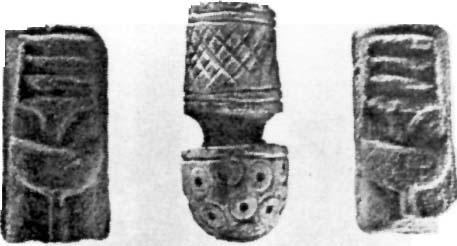
 'Eye' hieroglyph shown on Kuwait gold disk signifying kanga 'portable brazier' Rebus: kanga 'fireplace, furnace'
'Eye' hieroglyph shown on Kuwait gold disk signifying kanga 'portable brazier' Rebus: kanga 'fireplace, furnace' 






















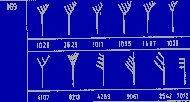

![clip_image057[4]](http://kalyan97.files.wordpress.com/2007/06/clip-image0574-thumb.jpg?w=80&h=68)




 m1186, m301, m302, m300
m1186, m301, m302, m300


![clip_image027[4]](http://kalyan97.files.wordpress.com/2007/06/clip-image0274-thumb.jpg?w=33&h=67)

![clip_image029[4]](http://kalyan97.files.wordpress.com/2007/06/clip-image0294-thumb1.jpg?w=51&h=49)

 Copper plate inscription. Antelope. Short tail upturned. Trough in front.
Copper plate inscription. Antelope. Short tail upturned. Trough in front.






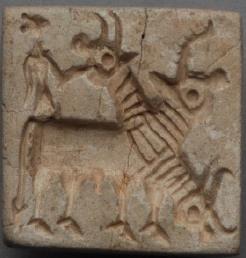



 m278 Mohenjo-daro Seal.
m278 Mohenjo-daro Seal.


 kole.l'temple' Rebu: kole.l'smithy' (Kota) baTa 'rimless pot' Rebus: bhaTa 'furnace, kiln'.
kole.l'temple' Rebu: kole.l'smithy' (Kota) baTa 'rimless pot' Rebus: bhaTa 'furnace, kiln'. Ficus benghalensis
Ficus benghalensis Santali glosses
Santali glosses




![clip_image062[4]](http://kalyan97.files.wordpress.com/2007/06/clip-image0624-thumb.jpg?w=99&h=45)
 Harpoons used in whale fishery, 1887
Harpoons used in whale fishery, 1887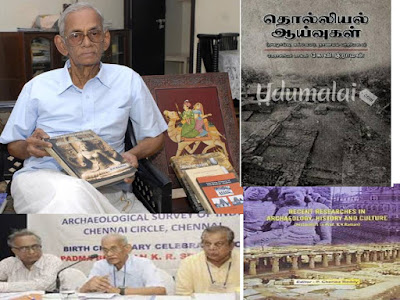



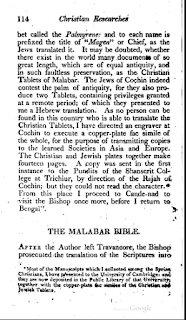


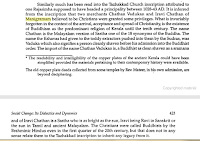

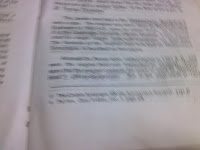
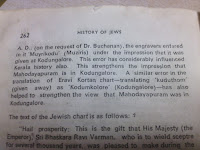
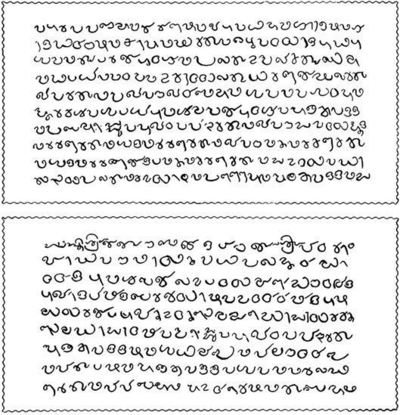







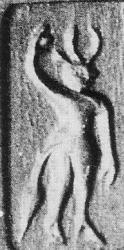


![clip_image033[4]](http://kalyan97.files.wordpress.com/2007/06/clip-image0334-thumb.jpg?w=71&h=44)

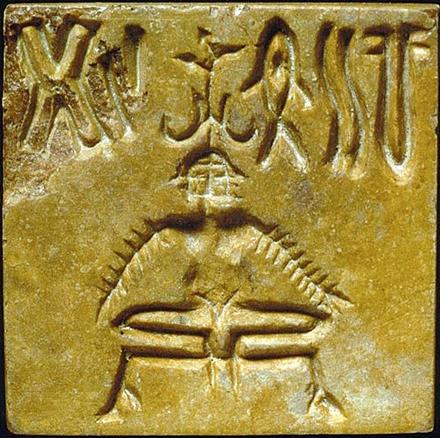

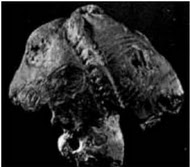
 harappa.com "Slide 88. Three objects (harappa.com)
harappa.com "Slide 88. Three objects (harappa.com) 





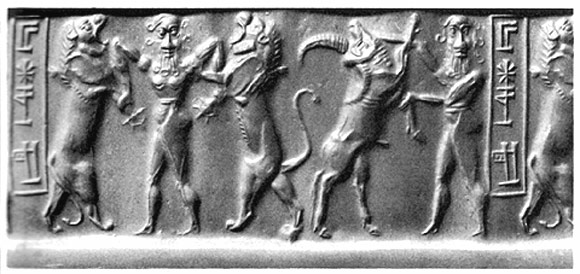
 Bull men contesting with lions. Cylinder seal and impression. Akkadian period. ca. 2334-2154 BCE. Marble. 28X26 mm. Seal No. 167 Morgan Library and Museum. A variant narrative adds hieroglyphs of an aquatic bird in flight. Hieroglyph: aquatic bird: karaṭa1
Bull men contesting with lions. Cylinder seal and impression. Akkadian period. ca. 2334-2154 BCE. Marble. 28X26 mm. Seal No. 167 Morgan Library and Museum. A variant narrative adds hieroglyphs of an aquatic bird in flight. Hieroglyph: aquatic bird: karaṭa1 Cylinder seal impression.
Cylinder seal impression.







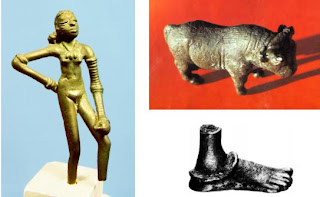
















 Subramanian Swamy
Subramanian Swamy 



















 Steatite statue fragment; Mohenjodaro (Sd 767); trefoil-decorated bull; traces of red pigment remain inside the trefoils. After Ardeleanu-Jansen 1989: 196, fig. 1; Parpola, 1994, p. 213.
Steatite statue fragment; Mohenjodaro (Sd 767); trefoil-decorated bull; traces of red pigment remain inside the trefoils. After Ardeleanu-Jansen 1989: 196, fig. 1; Parpola, 1994, p. 213.






 Slide 322. Terracotta bangle fragments decorated with red trefoils outlined in white on a green ground from late Period 3C deposits in Trench 43. This image shows both sides of the two fragments (H98-3516/8667-01 & H98-3517/8679-01).
Slide 322. Terracotta bangle fragments decorated with red trefoils outlined in white on a green ground from late Period 3C deposits in Trench 43. This image shows both sides of the two fragments (H98-3516/8667-01 & H98-3517/8679-01). Slide 323. Detail of terracotta bangle with red and white trefoil on a green background (H98-3516/8667-01 from Trench 43). Trefoil motifs are carved on the robe of the so-called "priest-king" statuette from Mohenjo-daro and are also known from contemporary sites in western Pakistan, Afghanistan, and southern Central Asia. http://www.harappa.com/indus4/323.html
Slide 323. Detail of terracotta bangle with red and white trefoil on a green background (H98-3516/8667-01 from Trench 43). Trefoil motifs are carved on the robe of the so-called "priest-king" statuette from Mohenjo-daro and are also known from contemporary sites in western Pakistan, Afghanistan, and southern Central Asia. http://www.harappa.com/indus4/323.html 
 Two decorated bases and a lingam, Mohenjodaro.
Two decorated bases and a lingam, Mohenjodaro.  "...
"...![Tripartite silver box [India] (15.95.12) | Heilbrunn Timeline of Art History | The Metropolitan Museum of Art: Tripartite silver box [India] (15.95.12) | Heilbrunn Timeline of Art History | The Metropolitan Museum of Art](http://s-media-cache-ak0.pinimg.com/736x/22/cc/86/22cc865f1b3ab8009549e158dd362c06.jpg)




 Crete. Cow-head rhython with trefoil decor.
Crete. Cow-head rhython with trefoil decor.

ANNANT SRIVASTAVA HOUSTON, TXabout 10 hours ago Like 0
I m signing because I fear the growth of my country has been hampered by these pseudo intellectuals.
Kris Rao SILVER SPRING, MDabout 10 hours ago Like 0
Those so called academics do not have any idea how lies were spread by some politicians and governments for their self interest. These people have only tunnel vision and has no intention of looking beyond their tunnel.
Mrudula Gandhi BOYNTON BEACH, FLabout 10 hours ago Like 0
The PM Modi ji is a great leader of the free world and the largest democracy. He represents over a Billion Hindus and Indians. He is visionary, bold, brave, compassionate, articulate and most trusted India ever had since India received freedom from the British Raj. These bully professors should be ashamed of themselves. Some are Muslims, Christians, and Pheusdo secular Hindus. I want every India in America to sign the petition and send a strong message that we the Hindus and Indians are not backing down to anyone in the world.
GO NAMO GO.
Ramesh Shah HOSTON, TXabout 10 hours ago Like 0
Truth Always Prevails. Narendra Modi ji was not responsible for 2002 riots, he helped to control it successfully. It was Muslim Mob at Godhar Station who are responsible burning a Train compartment and creating Riots.
Malini Iyer VIENNA, VAabout 10 hours ago Like 0
I am signing because of Modi is democratically elected leader of the largest democracy in the world.
Amit Sharma HAMILTON, NEW ZEALANDabout 10 hours ago Like 0
I can see the usual suspect in previous petition against Mr. Modi who work on one single agenda of unstable and poor India, so that their business of selling poverty and mediocrity remain relevant and thriving. I am signing this petition to answer those neo-obstructionists that Indians have come to an age where we will call those mischief mongers out to keep India's story of reform and progress under Modi 'Nis-kantak".
apurba bhattacharjee SILVER SPRING, MDabout 10 hours ago Like 0
I'm an Adjunct Professor at the Georgetown University, Washington DC. I fully support the petition because I believe Modi can truly turn around the fate of India. The opposition groups clearly have their vested interests against the development of India.
ritesh seal PEARLAND, TXabout 10 hours ago Like 0
studies in University of Pittsburgh and MIT Sloan
Michael Mclean Bender MIAMI, FLabout 10 hours ago Like 0
I love India. A vibrant and ancient culture with a leader who has a clear vision to better their future. A free, democratic country whose friendship and cooperation with the US is in our best interests, diplomatically, strategically and practically
Madhurima Chatterjee SUNNYVALE, CAabout 10 hours ago Like 0
As a US taxpayer I object to these safely tenured faculty indulging in baseless propaganda to further their vested interests at the expense of democracy and accountability
Narsing a WEST SPRINGFIELD, MAabout 10 hours ago Like 0
Southern Illinois University
Yvette Rosser MONTGOMERY, TXabout 10 hours ago Like 0
I have studied the phenomenon of Hinduphobia in Academia for 20 years. Many of the same names found here are also on endless petitions and a two-decade ongoing barrage of unsubstantiated critiques. Enough is enough! I urge these puffed up scholars of South Asian Studies to get off their high horses and get acquainted with the real India, as it is today, on the ground. Not in your post-colonial, peer reviewed anthologies.
Achalesh Amar PEARLAND, TXabout 10 hours ago Like 0
These "pseudo intellectuals" have done a great harm to the growth of the country. By signing this, I would urge them to introspect and see how they can contribute positively
Prashant Agarwal CROYDON, UNITED KINGDOMabout 10 hours ago Like 0
Honourable Prime Minister of India Shri Narendra Modi ji is the epitome of integrity and honesty. His statecraft and leadership skills is second to none. I strongly condemn politically motivated and grossly biased views expressed by few so called and self proclaimed "intellectuals" in America. My advice to these people are, to work hard and earn money rather than getting some illegally siphoned money for making such sick statements.
Chandra Sivaguharaman PLANO, TXabout 10 hours ago Like 0
Nova Southeastern University, FL
Manjunath Raju SAN DIEGO, CAabout 10 hours ago Like 0
San diego State University
Aloke Kumar EDMONTON, CANADAabout 10 hours ago Like 0
I am academic and I would like the world to know Sen and co-conspirators are not representative of the view of the academics.
Sumeet Roy INDIAabout 10 hours ago Like 0
Modi is a true nationalist.
Anand Sharma PEARLAND, TXabout 10 hours ago Like 0
This faculty statement is so ridiculously far off the reality that it brings great injustice not only to India and Modi Ji but also to my beloved adopted country USA. This statement should be condemned in strongest terms.
Sompa Guha Roy THANE, INDIAabout 10 hours ago Like 0
I trust Modi
Ranjit Ballal ULLESTHORPE, UNITED KINGDOMabout 10 hours ago Like 0
Modi stands for development of India. The people who oppose him also oppose the mandate given to him by the Indian people. Propaganda against him is carried out by vested interest who are happy think that their personal political interest are above the good of India.
Mohan Gupta CANADA, CANADAabout 10 hours ago Like 0
People who oppose Modi's visit are traitors of Bhaarat and Hindus and have sold their souls for monetary GAINS
Sumalatha Elliadka SUNNYVALE, CAabout 10 hours ago Like 0
I'm an alumni of San Jose State University and I work at Proofpoint Inc
ragini Sharma WASHAGO, CANADAabout 11 hours ago Like 0
Wendy Doniger and Sheldon Pollock have created academic cartel to insulate work from crticism. Shameful attack on Modi.
Narayan Swamy JOHNS CREEK, GAabout 11 hours ago Like 0
It is deplorable that as a community we have to pay heed to these academics who are low on the totem pole of influence and happen to have a job because of subversive funding sources and unsuspecting parents who cough up their tuition fees to support these guys cacophony. We need to shun these schools, endowments and media that give them coverage..Let the rational and capable people speak up.
Sushil Chachra WESTBURY, NYabout 11 hours ago Like 0
All the allegations against Honorable Shree Modiji are absolutely false.
Parveen Chandra RIVERVIEW, FLabout 11 hours ago Like 0
Modi is wrongly targeted with lies and misunderstandings. Muslims progressed the most in his state . Actually some politicians are using minorities to settle political scores.
kaushalendra jadon BALTIMORE USA, MDabout 11 hours ago Like 0
Hi is a good person, good leader and overall a good visionary who thing about country, not about himself. Hi is doing great thing for country, may be it's invisible in short term but it will defiantly come in effect in longer run.There is nothing new in it that some of them opposing MODI, it's usual. Now it's my decision that which side i prefer to go. I side Modi way.
Rahul Banerji REDLANDS, CAabout 11 hours ago Like 0
I am signing because after years of oblivion, India has produced a popular prime minister who will not toe the western agenda of running India like a vassal state. He has not been educated outside India, nor has he ever visited any foreign country in his formative years. In sum and substance, western governments do not have anything on him unlike his predecessors including their teams who have been blackmailed these last 70 odd years and are extremely upset with his individualistic and single minded zeal to make India a great nation! I believe his challenges are many and erected daily with a missionary zeal by forces inimical to India but nothing that is insurmountable if he has God and nation behind him!
Sumit Ghosh INDIAabout 11 hours ago Like 0
This is a horrible attempt by the left to stop Modi,to make investment in India.They ruined India completely for this many years,and now they donot want people to work.Theur only ambition is to stop Modi,and nothing else.
Nisarg Bhatt JERSEY CITY, NJabout 11 hours ago Like 0
Modi is a great leader
kishan gupta GATES MILLS, OHabout 11 hours ago Like 0
Shri Modi is leading India on right path.
He is honest politician who has given his life to the nation.
Bala Balaguru MONMOUTH JUNCTION, NJabout 11 hours ago Like 0
Time to let the world know that Nare8 Modi has always stood up for protecting the rights of all and progress of all. If he had chosen to, he too could have come to the US and become an academic drawing Fat salaries and producing little for what they earn (take). Instead he chose to work on the ground.
Bijender Tanwar EDISON, NJabout 11 hours ago Like 0
Oppose these leftist n bias educational so called professor, who they are ?
KIRIT VAIDYA LAKE MARY, FLabout 11 hours ago Like 0
I DO NOT AGREE WITH FACULTY MANISEATO